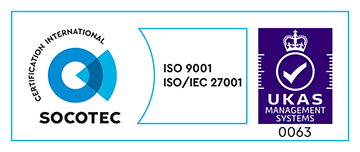In the defence sector, quick, data-driven decisions can make the difference between success and failure in operations. Traditionally, defence IT projects have concentrated on large-scale initiatives that take time to show results. Now, a shift towards agile strategies is changing this. In this blog I’ll explore how smaller-scale data projects and a focus on “early release of value” are helping defence organisations break down data silos, experiment with AI, and make faster, more informed decisions.
Breaking down data silos in defence
One of the biggest challenges in defence is data silos. Different parts of the organisation store their data separately, making it hard to access and share information. While there are various strategies for digital modernisation, these efforts often work in isolation. Each organisation within defence has its own chief information officerand they often work independently. This slows down decision-making as data isn’t easily available across teams and platforms.
The UK’s Data Strategy for Defence flagged this issue in 2021.

Improving data sharing across platforms could allow defence teams to better predict resources, enhance decision-making, and respond quicker to threats. The strategy even 3 years ago was to drive a more data-centric approach across operations.
Rather than trying to fix everything at once, agile projects focus on smaller steps to unlock the value of data. For example, the Defence Information Platform is consolidating over 25 platforms into one, making it easier to find and manage data. These smaller data projects are key to delivering quick wins, rather than waiting years for a big project to complete.
Using AI and agile strategies to speed up decisions
As more data becomes available, defence organisations are looking at ways to use AI to make faster, better decisions. The Defence AI Playbook (2024) highlights that AI could improve situational awareness, automate decisions, and predict future outcomes. By 2030, it’s estimated that up to 30% of defence processes could be automated using AI.
But to tap into this potential, agile methods are needed for rapid testing and scaling of AI tools. Defence organisations need to be able to deploy AI solutions quickly. Instead of waiting years for a massive project to deliver, defence is now focusing on how to release value early.

A ‘fail fast, learn fast’ mindset is key to quick innovation. By conducting pilot projects and iterating based on feedback, defence organisations can refine their AI models quickly without risking large failures. This not only speeds up the development of effective solutions but also creates a culture of continuous learning.
Early release of value in defence projects
In the past, defence projects followed a waterfall model – large, multi-year plans with all the value delivered at the end. Now, programs like Business Modernisation for Support (BMfS) are shifting to agile methods, delivering value in stages rather than waiting for one big project cycle to finish.
It’s estimated that the Ministry of Defence could save billions of pounds by improving data access and adopting agile approaches across its operations. This shift not only reduces costs but also allows for faster improvements.
Agile methodologies align equally well with modern security practices in defence. Security is now ‘baked in’ from the start of a project rather than being checked at the end. This approach supports quicker, safer delivery of new applications and systems.
Defence teams must tackle data quality and security
Defence organisations all recognise that data quality is a key issue. While there’s a lot of valuable data, it’s not always ready for AI systems to use effectively. ‘How do we clean up our data and make it accessible?’ is a common question I hear from clients.
Data security is another major concern. While AI offers significant potential to improve decision-making and automate processes, it also introduces new security risks. For example, large language models (LLMs) trained on defence data could unintentionally leak classified information, or AI systems could be manipulated by adversaries to provide false or misleading outputs.
Organisations are understandably cautious about sharing sensitive data with LLMs. Agile approaches help tackle this challenge by allowing defence teams to test and refine AI models in smaller, more secure steps, rather than taking on the risk of a large-scale implementation.
Agile strategies for future success
The shift to more agile strategies in defence along with a data-driven approach is reshaping how the industry operates. By breaking down data silos, using AI to speed up decisions and focusing on delivering value in smaller stages, defence organisations can respond faster to modern challenges.
In particular I think that the key to long-term success lies in adopting agile methods that allow for continuous delivery of value. This not only helps defence organisations stay ahead of today’s challenges but also sets them up for the future.
For more insights, visit our data and AI services pages or take a look at the government Defence AI Playbook.

Laying the groundwork for AI
Unlock your AI potential: Discover your archetype, master the 3 pillars of data maturity, and learn from real-world transformations in our latest whitepaper, Laying the Groundwork for AI.







